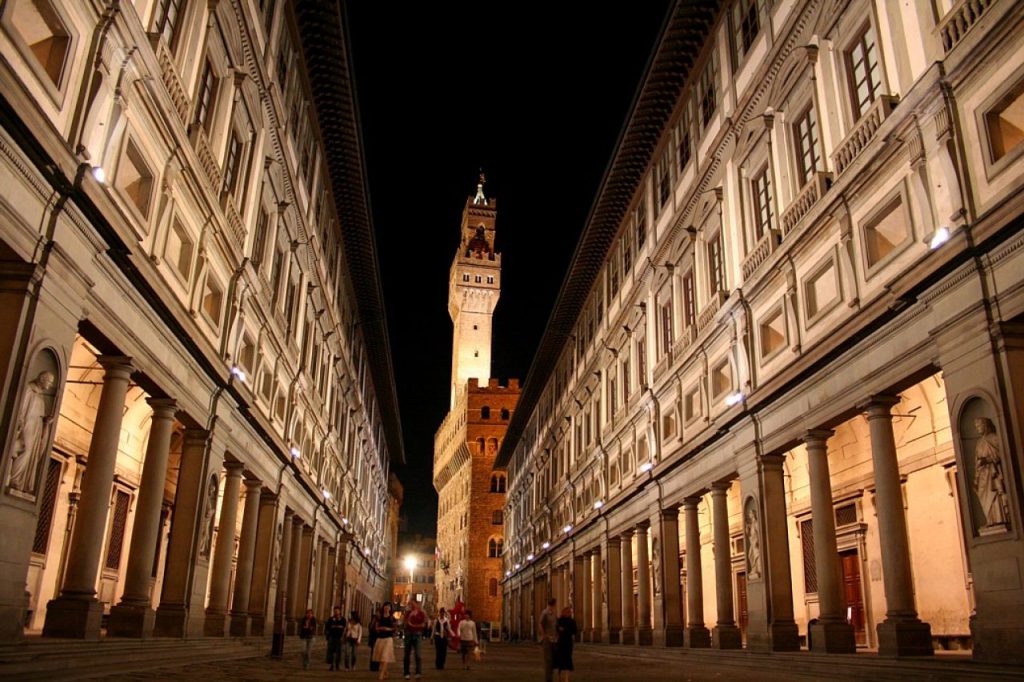A visit to Florence cannot be considered completed without a tour to the Uffizi Gallery, which hosts great and important masterpieces. The Uffizi Gallery is located in a palace built by the famous Renaissance artist, architect and historian Giorgio Vasari and commissioned by Cosimo I de’Medici.
A visit to Florence cannot be considered completed without a tour to the Uffizi Gallery, which hosts great and important masterpieces. During our Uffizi tours you will discover amazing works of art and learn the interesting history of the gallery.
The Uffizi Gallery is located in a palace built by the famous Renaissance artist, architect and historian Giorgio Vasari. It was commissioned by Cosimo I de’Medici, the first Grand Duke of Tuscany in 1560 to house his administrative offices, also called uffizi, that is where the gallery takes its name.
When Cosimo’s son, Francis I, came to power, he made some changes commissioning the architect Bernardo Buontalenti the task to complete the palace and add a gallery on its top to store his paintings, sculptures and precious objects.
When Francis’ brother, Ferdinand I, became the new Grand Duke of Tuscany the collection grew as he added other works and rooms. He also allowed for the first time the visit to the Uffizi Gallery, although only upon special request.
The Uffizi Gallery continued to grow over the centuries as the Medici continued to add new pieces to their collection. In this way the Uffizi Gallery has became what it is now: one of the finest collections of paintings, sculptures and rare antiques in the world.
When the Medici dynasty came to an end, the last of the Medici, Anna Maria Luisa, left the collection to the noble Lorraine family, but only on the condition that the collection would remain forever in Florence. The Lorraine family gave an important contribution to the Uffizi Gallery adding works and rearranging the gallery.
It was under the Lorraine family that the Uffizi was open to the public in 1769. It became mainly an art museum, as all the other collections – including ceramic, scientific instruments and antique armor – were sold or put on display in other museums. Furthermore the statues were moved to the Bargello Museum and the Etruscan antiques to the Archaeological Museum. So the Uffizi Gallery shifted its focus on the collection of paintings.
Over the centuries the Uffizi Gallery have continued to play an important role in Florence city life. It also was the seat of the Italian Senate when Florence became the capital of the Italian Republic from 1865 to 1870.
Today the Uffizi Gallery is at the centre of many Florence tours, as one of the main tourist attraction in Italy, with visitors from all over the world coming to admire the world’s finest masterpieces.

